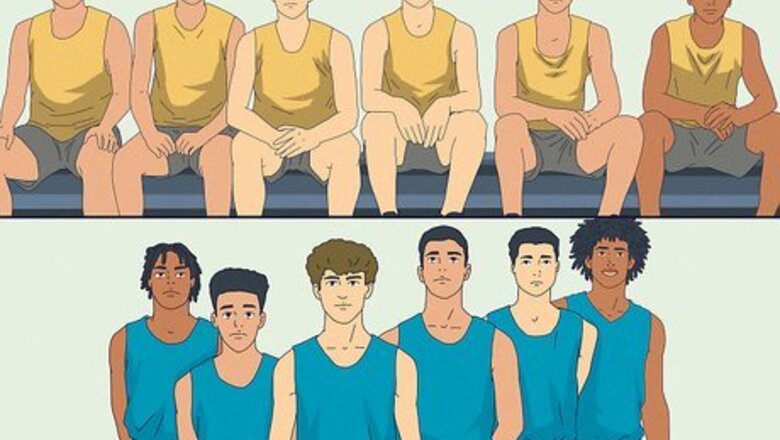
views
X
Research source
It might have started as a joke, but BASEketball has rules just like the sports it started from.
Setting Up Your Teams
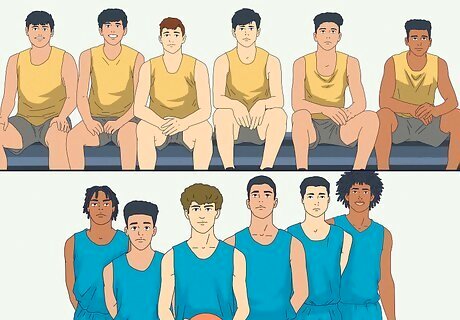
Recruit your players. You will need two teams, each with the same number of players. In college intramural BASEketball regulations, each team is allowed a maximum of six (6) players. Of course, you can play with however many people you recruit.
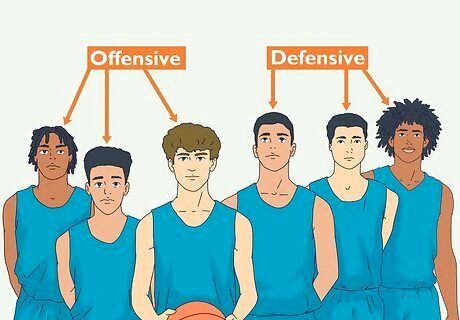
Decide on roles. Each team will need a mix of offensive and defensive players. In a team of six players, you will want three offensive players and three defensive players. For defense, two players serve in the "outfield" and one is stationed next to the shooter to attempt "psych outs," which will be explained in Part 3. For offense, three players are on the field: one will be the shooter and, just like in baseball, the other two are runners on bases.
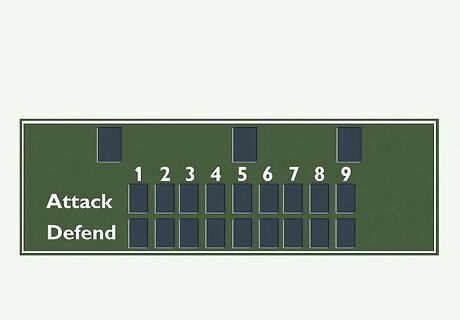
Determine the number of innings. In baseball, there are nine innings, each a period of play where one team plays offense and the other plays defense. You can use all nine, or you can decide on whatever number you'd like.
Setting Up the Game
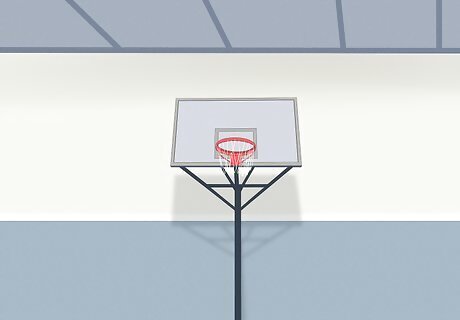
Get a basketball hoop. You can use a hoop mounted on a building or a freestanding hoop. Just make sure you have about 20 feet of free space in front of it to set up your court.
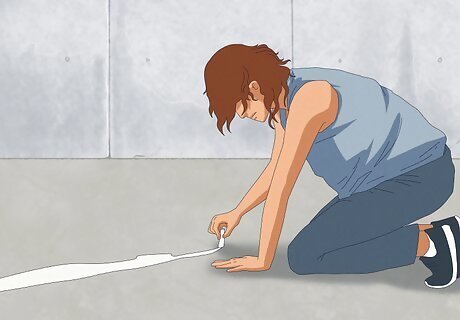
Lay out a court. Sidewalk chalk is great for this because it washes right off and comes in different colors. A BASEketball court combines elements from baseball and basketball, using a space about half the size of a basketball court. Imagine it like a baseball diamond inside a rectangular basketball half-court.
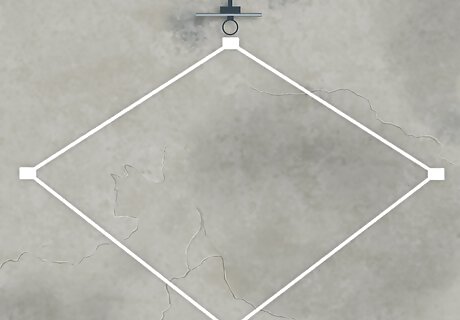
Draw four square bases arranged in a diamond (♦) shape. The "top" of the diamond should be just in front of the basketball hoop. The "bottom" of the diamond, also known as "home base," should be about 20-25 feet away from the hoop and located directly across from it. You may want to make home base a little bigger or use a different color of chalk to distinguish it. Just as in baseball, 1st base is located on the diamond to the right of home base, and 3rd base is located on the diamond to the left of home base.
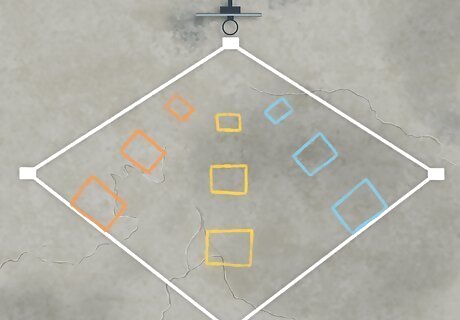
Mark multiple shooting spots. Use different colors of chalk to distinguish them, if you have it. The various shooting locations radiate outward from the hoop in a roughly triangular shape, with the spots closest to the hoop located closer together and spread out farther apart as they get farther from the hoop. Spread out each row of squares so that one is in the middle of the "diamond" (roughly in line with the hoop and home base) and the others slant off to either side just outside the diamond. The squares should form a rough line so that the triple square is a bit behind the double square, which is a bit behind the single square, etc. Draw two "bunt" squares just in front of the hoop to either side. The bunt squares should be in line with 2nd base (just in front of the hoop). Draw three single squares at the free throw line (about 15 feet from the hoop). Draw three double squares between the free throw line and 3-point line (between 15 and 20 feet from the hoop). Draw three triple squares at the 3-point line (just over 20 feet from the hoop)
Playing Offense
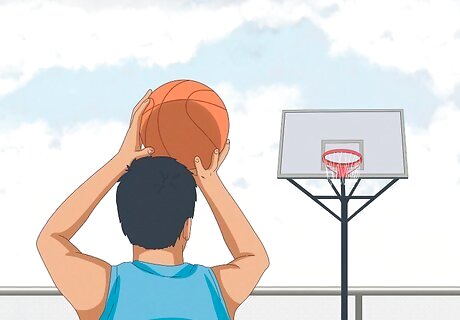
Get a basketball and have a shoot-off to see who gets possession first. Whoever makes the first shot from the foul line (a horizontal line running between first and third base) will get the ball.
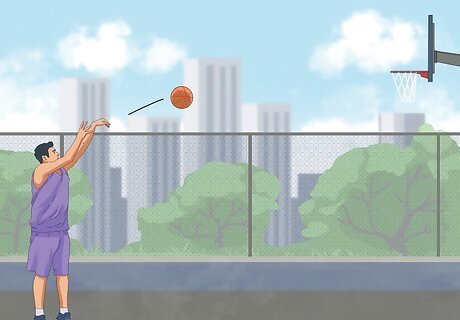
Choose a shooting square. The player who got possession of the ball in Step 1 chooses a square to shoot from. The square chosen determines the number of bases awarded if the player makes the shot: singles get one base, doubles two, triples three. The bunt squares move runners ahead one base each, but they cannot go to home base on a bunt. Bunting also results in a "sacrifice out.". If your team has two outs already, you cannot make a bunt.
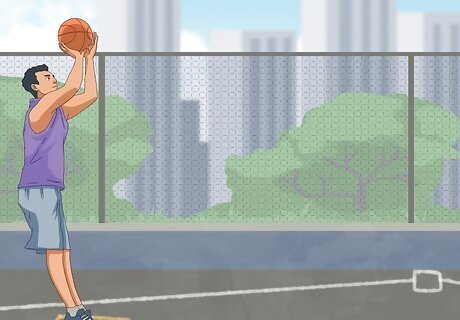
Make a shot. You must stand within the shooting square while taking the shot. Stepping outside the square counts as an out. If you miss a shot -- meaning you fail to hit the basket or the backboard of the hoop -- it is counted as an out. A player counted "out" cannot shoot again for the remainder of the inning. If you make the shot, the number of bases is awarded based on the square you're shooting from. You cannot shoot from the same square twice. Once a shot has been taken from a square, a team cannot use it again for the rest of the inning. You may find it helpful to use small objects such as bean bags to mark used squares. If your shot does not enter the hoop but makes contact with the target, you may be able to use a "put back." In basketball, a "put back" occurs when a player is able to secure a rebound from his/her own team's missed shot. If you or a team-mate can "put back" the shot, you score.
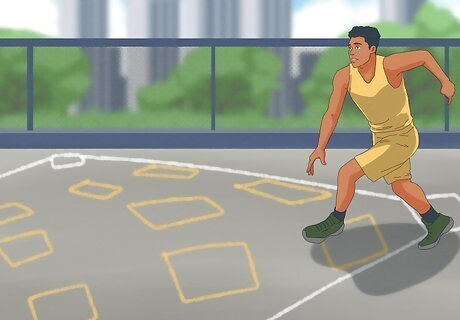
Run the bases. After a successful shot, players must run the bases just as in baseball. A shot scored from a single square would advance the runner one base, and so on.
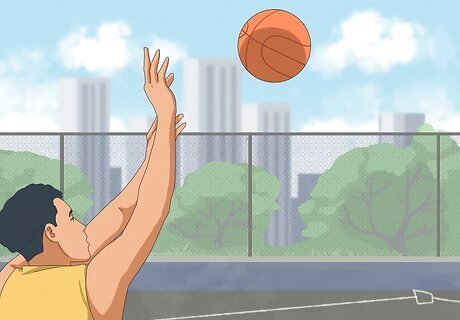
Complete a shooting cycle. A unique feature of BASEketball is that each player must shoot a specific order in each inning. If a player shoots a single the first time, they must attempt a double the next time they are "up to bat," and a triple the next time. If the first shot is a home run, a single must be played on the next turn.
Playing Defense
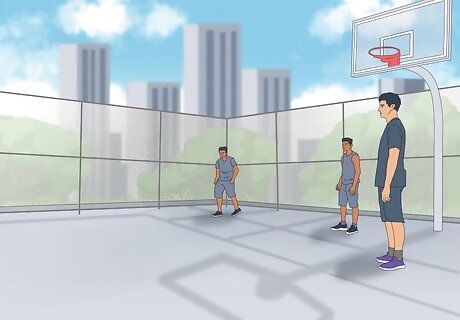
Place your players. Two players serve in the "outfield" near the hoop in order to attempt rebound shots. The third defensive player stands near the shooter and attempts a "psych out."
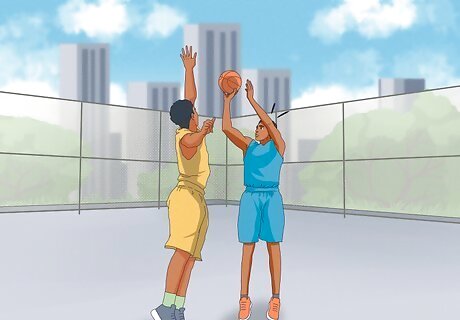
Psych-out your opponents. "Psych-outs" are a hallmark of BASEketball and are used to disrupt the shooter's concentration. Only one player may play "psych-out" tactics at a time; there is no double-teaming. The "psych-out" defense may use props, hollering, and all kinds of silly behavior as diversion tactics, but is not supposed to actually touch the ball or the shooter, limit his/her line of sight, or impair his/her vision (such as putting your hands in front of his/her face). Of course, a lot of play is good sportsmanship, so make sure you also don't hurt anyone's feelings!
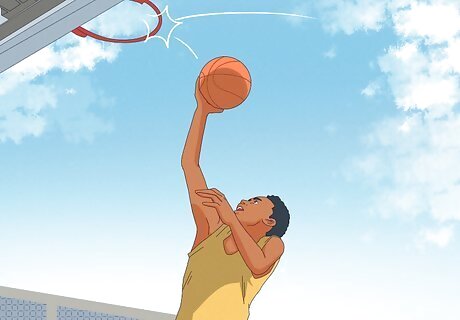
Rebound missed shots. The offense can attempt a "put-back" if the shooter misses a shot. The defense can also try to rebound a missed shot using a "double play" if the defense has runners on base. If the defense rebounds the shot, the shooter and the player closest to home base are both counted out. If the defense misses the shot during a double-play, the offense is allowed to "tip in" the missed shot for a play conversion. A valid tip in must be shot with both feet off the ground (so you'll have to jump to try one).< Any player on base is allowed to attempt a tip in. If the first tip in is missed, the shooter can also attempt a tip-in. If this shot succeeds, the shooter is awarded the base(s) s/he was originally attempting. Only two attempts at conversion may be made during a play. If no shot succeeds after two attempts, the play is called as "dead."
















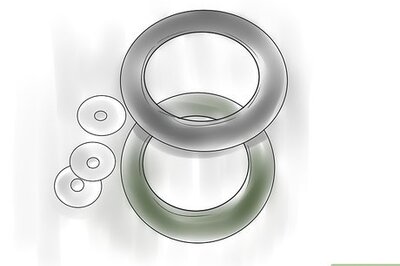
Comments
0 comment